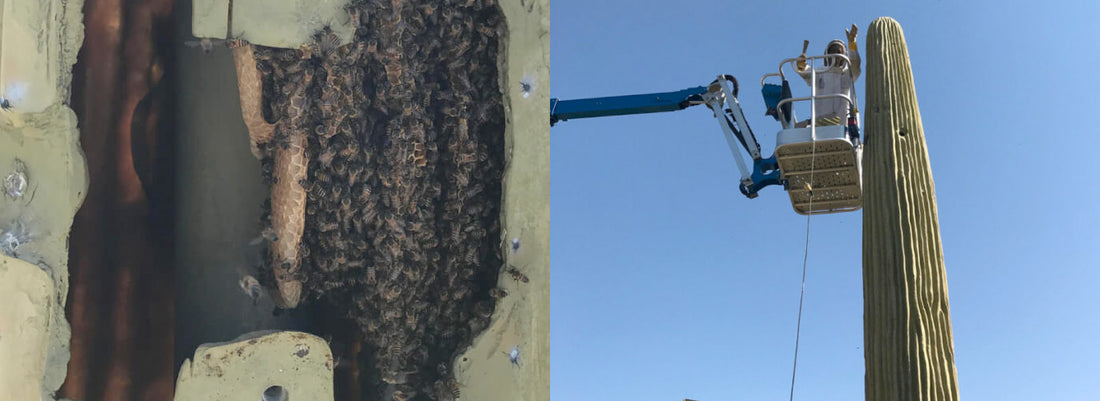
Although bees are our allies when it comes to food production, we don’t always want them so close to our homes. Have you discovered a beehive or swarm on your property? Is the hive in a place where it could be inconvenient for people and animals and you’d like it removed?
When you discover an unwanted beehive on your property, you have two options for removal – relocation or extermination. Both methods remove the hive from your property but have very different ecological consequences that affect your local ecosystem more than you may realize.
What is Live Bee Removal and Relocation?
Live bee removal and relocation is pretty much how it sounds. When you find a beehive or bee swarm on your property, you can hire a company to remove the bees and relocate them to a new area away from homes and buildings. The bees get a second chance to add value to the environment by pollinating, and you get peace of mind knowing the risk of bee stings has been eliminated.
The Benefits of Live Bee Removal
Honeybees pollinate 1/3 of the food we eat, so keeping them alive helps keep us alive. Honeybees are one of our greatest allies when it comes to food production, so if we have the option to relocate them, it becomes a net benefit for us both at the end of the day.
- Preserve Generations of Bees – Live bee removal preserves the life of a hive so they can pollinate, produce honey, and create new generations of bees to carry on their important work.
- Harmless & Safe – Live been removal doesn’t harm the bees. A specially designed vacuum is used to remove the bees eliminating harm or death.
- Future Deterrent – Removing the hive eliminates the chances of a new hive developing from new bees attracted to the smell of wax left over from a destroyed hive.
- Chemical Free Process – No dangerous chemicals or harsh substances are used during the removal process.
The Dangers of Bee Insecticides
When a beehive is treated with an insecticide to exterminate it, you not only eliminate the hive and all future generations, but bee colonies within two miles of the beehive can be affected. Honeybees are always on the move and continually scouting for new resources.
After a hive is sprayed with insecticides, the guard bees will have died, and robber bees from other hives in the area may find the poisonous hive. Attracted by the honey reserves, the robber bees will start transferring insecticide contaminated honey to their hive and possibly leading to a widespread kill off for all the beehives in the local foraging area.
Won’t the Bees Just Move on in the Winter?
Once bees move in, modern construction practices provide honey bees with perfect protection to thrive year-round. Bees tend to construct hives in open spaces, and considering how mild Arizona winters can be, they will be more than happy to stick around. Colonies can grow to 100,000 bees and live for years. A queen bee can lay up 2,000 eggs in one day.
Need a Bee Hive or Swarm Removed From Your Property?
Having an appreciation for and valuing the meaningful work honeybees do is a good thing. But it doesn’t mean you have to let them move in. The best way you can support honeybees is by ethically and safely removing them and relocating them. If you have a hive or swarm, call AZ Queen Bee today, and we’d be happy to discuss how we safely remove and relocate the bees on your property.





